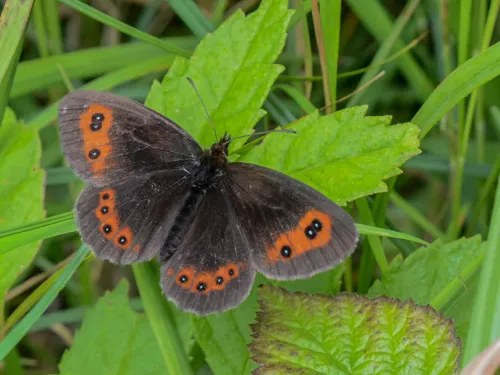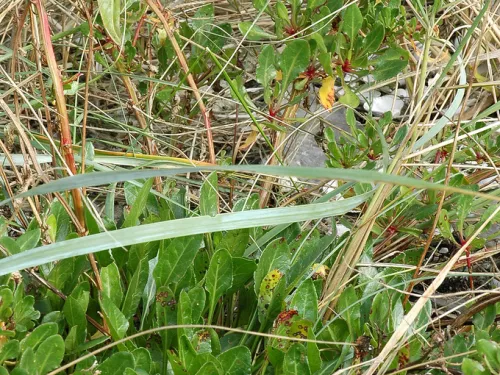Accentor (1)
Agarics and allies (2)
Alderflies (1)
Amanitas (2)
Amaryllis (1)
Ants (4)
Barn owls (1)
Bats (13)
Beavers (1)
Bee flies (1)
Blue, Copper and Hairstreak Butterflies (12)
Bracken Family (1)
Bracket Fungus (2)
Broad-winged damselflies (1)
Brush-Footed Butterflies (24)
Buntings (1)
Burnet Moths (1)
Bush Crickets (6)
Carcinids (1)
Carrion Beetles (2)
Cellar Spiders (1)
Click Beetles (2)
Clubtail Dragonflies (1)
Colubrid Snakes (1)
Common Burrowing Mayflies (1)
Coral Fungi (1)
Cormorants and Shags (2)
Corvids (8)
Crab Spiders (1)
Crambid Snout Moths (1)
Craneflies (1)
Cranes (1)
Creeping Water Bugs (1)
Cuckoo Wasps (1)
Cuckoos (1)
Cups, Peels and Ear Fungi (5)
Darners (7)
Deer (5)
Divers or Loons (3)
Diving Beetles (1)
Dogs (1)
Dormice and Hazel Mice (1)
Ducks, Geese and Swans (29)
Earth-Boring Dung Beetles (1)
Earwigs (1)
Eggars, Snout Moths or Lappet Moths (4)
Emerald Dragonflies or Green-Eyed Skimmers (1)
Falcons and Kestrels (5)
False Blister Beetles (1)
Family of Harvestmen (1)
Family of Millipedes (2)
Finches (14)
Fire-Coloured Beetles (1)
Fireflies and Glow-worms (1)
Flax (1)
Freshwater Eels (1)
Fried Chicken Mushroom (1)
Froghoppers (1)
Funnel-Web Spiders (1)
Gall Wasps (6)
Geometer Moths (7)
Goldcrests and Kinglets (2)
Gossamer-winged butterflies (2)
Grasses (18)
Grebes (5)
Green Lacewings (1)
Ground Beetles (2)
Gulls, Terns and Skimmers (11)
Hamsters, Voles, Lemmings (3)
Hawk Moths (5)
Hawks and eagles (7)
Hedgehogs and Gymnures (1)
Herons, Egrets and Bitterns (5)
Honey Bees, Bumblebees and Allies (11)
Honey Fungi and Shanks (2)
Hornets, Yellowjackets and Paper Wasps (2)
Horse flies (2)
Horseshoe Bats (2)
Hoverflies (8)
Ibises and Spoonbills (2)
Jumping Spiders (1)
Keel Back Slugs (1)
Kingfishers (1)
Knights, Cavaliers, Funnels, Blewits etc. (1)
Ladybirds (7)
Ladyferns and Allies (1)
Laetiporaceae (1)
Larks (3)
Leaf Beetles (4)
Leaf Warblers (4)
Lesser Water Boatmen (1)
Long-tailed Tits (1)
Longhorn Beetles (5)
Longspurs and Snow Buntings (1)
Loopers, Owlet moths and Cutworm Moths (6)
Maidenhair Ferns (1)
Mammal Fleas (1)
March Flies (1)
Mason, Leafcutter and Carder Bees (3)
Meshweaver Spiders (1)
Mice and Rats (4)
Mining Bees (2)
Minnows, Goldfish and Carp Family (8)
Mints (1)
Moles, Mole Shrews and Desmans (1)
Morels (1)
Moths (1)
Mustelids (6)
Narrow-Winged Damselflies (7)
Nightjars (1)
Northern Lampreys (1)
Nursery-Web Spiders (2)
Oak, Beech and Chestnut (1)
Oceanic Dolphins (1)
Old World Flycatchers (8)
Old World Sparrows (2)
Orb Weaver Spiders (3)
Orchids (4)
Ospreys (1)
Oyster Mushrooms and Allies (1)
Oystercatchers (1)
Parrots, Parakeets and Cockatoos (1)
Perches, Walleyes and Darters (1)
Periwinkle Snails (1)
Perlodid Stoneflies (1)
Pheasants, Grouse & Partridges (4)
Pigeons and Doves (5)
Pikes (1)
Pill Bugs (2)
Pinwheels and Parachute Mushrooms (1)
Plasterer Bees (1)
Plovers, Lapwings and Dotterals (5)
Polypody (2)
Polypores (1)
Pondskaters (1)
Prominent Moths (2)
Puffballs (2)
Pyronemataceae (1)
Rabbits and Hares (2)
Rails, Crakes and Coots (3)
Reed, Marsh and Tree Warblers (2)
Reedlings (1)
Robberflies (1)
Rove Beetles (2)
Rush Family (4)
Salamanders and Newts (3)
Salmons, Trouts and Whitefishes (3)
Sandpipers and Redshanks (17)
Saturniid Moths (1)
Sawflies (1)
Scarab Beetles (3)
Scorpionflies (1)
Sedge Family (8)
Sedgeflies or Railflies (2)
Shearwaters, Petrels and Fulmars (2)
Shield Bugs (3)
Short-Horned Grasshoppers (4)
Shrews (3)
Shrikes (1)
Silverfish and Firebrats (1)
Skimmers or Perchers (6)
Skipper Butterflies (4)
Skuas (1)
Slowworms (1)
Snipe flies (1)
Snuffs, Fingers and Woodwarts (1)
Soldier Beetles (2)
Soldierflies (1)
Sow Bugs (1)
Spiketails (1)
Spittlebugs (1)
Spleenworts (3)
Spreadwinged Damselflies (2)
Square-Headed Wasps, Sand Wasps and Allies (1)
Squirrels (2)
Stag Beetles (3)
Starlings (1)
Sticklebacks (1)
Stilts and Avocets (2)
Stink Bugs (6)
Stinkhorns (2)
Stone Curlews and Thick Knees (1)
Stone Loaches (1)
Stone, Common or Brown Centipedes (1)
Sunflower and Daisies (1)
Swallows and Martins (3)
Swallowtail Butterflies (1)
Swifts (1)
Tangle Web Spiders (1)
Thrushes (6)
Tits, Chickadees and Titmice (5)
Treecreepers (1)
True Frogs (2)
True Lizards (1)
True Owls (4)
True Seals (1)
True Toads (2)
Typical Backswimmers (1)
Typical Leafhoppers (1)
Typical Sculpins (1)
Typical Snails (2)
Typical Treehoppers (1)
Ulmarid Jellyfish (2)
Umbellifers (1)
Underwing, Tiger, Tussock Moths and Allies (9)
Vipers (1)
Wagtails, Pipits and Longclaws (6)
Warblers (7)
Water Measurers (1)
Water Scorpions (2)
Waxwings (1)
Weeverfish (1)
Whirligig Beetles (1)
White, Sulphur and Yellow Butterflies (8)
Wolf Spiders (1)
Wood Ferns (1)
Wood-Borer Beetles (1)
Woodpeckers (3)
Wrens (1)




